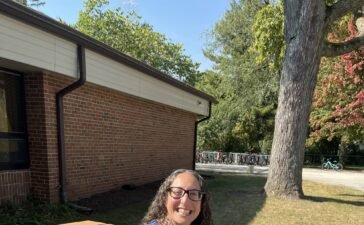Economists haven’t been able to conclusively prove that student achievement suffered more under LIFO layoffs than other ways of reducing the teacher workforce. But the evidence points in that direction for children in poverty and for Black and Hispanic students, according to two research briefs by separate groups of scholars that reviewed dozens of studies. For example, in the first two years after the 2008 recession, Black and Hispanic elementary students in Los Angeles Unified School District had 72% and 25% greater odds, respectively, of having their teacher laid off compared to their white peers, according to one study.
Districts with higher rates of poverty and larger shares of Black and Hispanic students were more likely to have seniority-based layoff policies, according to another study. “LIFO layoff policies end up removing less experienced teachers, sometimes in mass, from a small handful of schools,” wrote Matthew Kraft and Joshua Bleiberg in the 2022 policy brief.
Budget cuts can create some messy situations. Terry Grier, a retired superintendent, who ran the San Diego school district following the 2008 recession, remembers that his district cut costs by eliminating jobs in the central office and reassigning these bureaucrats, many of whom had teacher certifications, to fill classroom vacancies. To avoid additional layoffs, his school board forced him to transfer teachers in overstaffed schools to fill classroom vacancies elsewhere, Grier said. The union contract specified that forced transfers had to begin with teachers who had the least seniority. That exacerbated teacher turnover at his poorest schools, and the loss of some very good teachers, he said.
“Despite being relatively new to the profession, many of these teachers were highly skilled,” said Grier.
Losing promising new talent is painful. Raúl Gastón, the principal of a predominantly Hispanic and low-income middle school in Villa Park, Ill., still regrets not having the discretion to lay off a teacher whose poor performance was under review, and being forced instead to let go of an “excellent” rookie teacher in 2015.
“It was a gut punch,” Gastón said. “She had just received a great rating on her evaluation. I was looking forward to what she could do to bring up our scores and help our students.”
The loss of excellent early career teachers was made stark in Minnesota, where Qorsho Hassan lost her job in the spring of 2020 because of her district’s adherence to LIFO rules. After her layoff, Hassan was named the state’s Teacher of the Year.
Hassan was also a Black teacher, which highlights another unintended consequence of layoff policies that protect veteran teachers: they disproportionately eliminate Black and Hispanic faculty. That undermines efforts to diversify the teacher workforce, which is 80% white, while the U.S. public school student population is less than half white. In recent years, districts have had some success in recruiting more Black and Hispanic teachers, but many of them are still early in their careers.

The unfairness of LIFO layoffs became evident after the 2008 recession. Since then, 20 states have enacted laws to restrict the use of seniority as the main criteria for who gets laid off. But many states still permit it, including Texas. State laws in California and New York still require that layoffs be carried out by seniority, according to TNTP, a nonprofit focused on improving K-12 education, and Educators for Excellence.
While there is a consensus among researchers that LIFO layoffs have unintended consequences that harm both students and teachers, there’s debate about what should replace this policy. One approach would be to lay off less effective teachers, regardless of seniority. But teacher effectiveness ratings, based on student test scores, are controversial and unpopular with teachers. Observational ratings can be subjective and, in practice, these evaluations tend to rate most teachers highly, making it hard to use them to distinguish teacher quality.
Others have suggested keeping a seniority system in place but adding additional protections for certain kinds of teachers, such as those who teach in hard-to-staff, high-poverty schools. Oregon keeps LIFO in place, but in 2021 carved out an exception for teachers with “cultural and linguistic expertise.” In 2022, Minneapolis schools decided that “underrepresented” teachers would be skipped during seniority-based layoffs. Still another idea is to make layoffs proportional to school size so that poor schools don’t suffer more than others.






